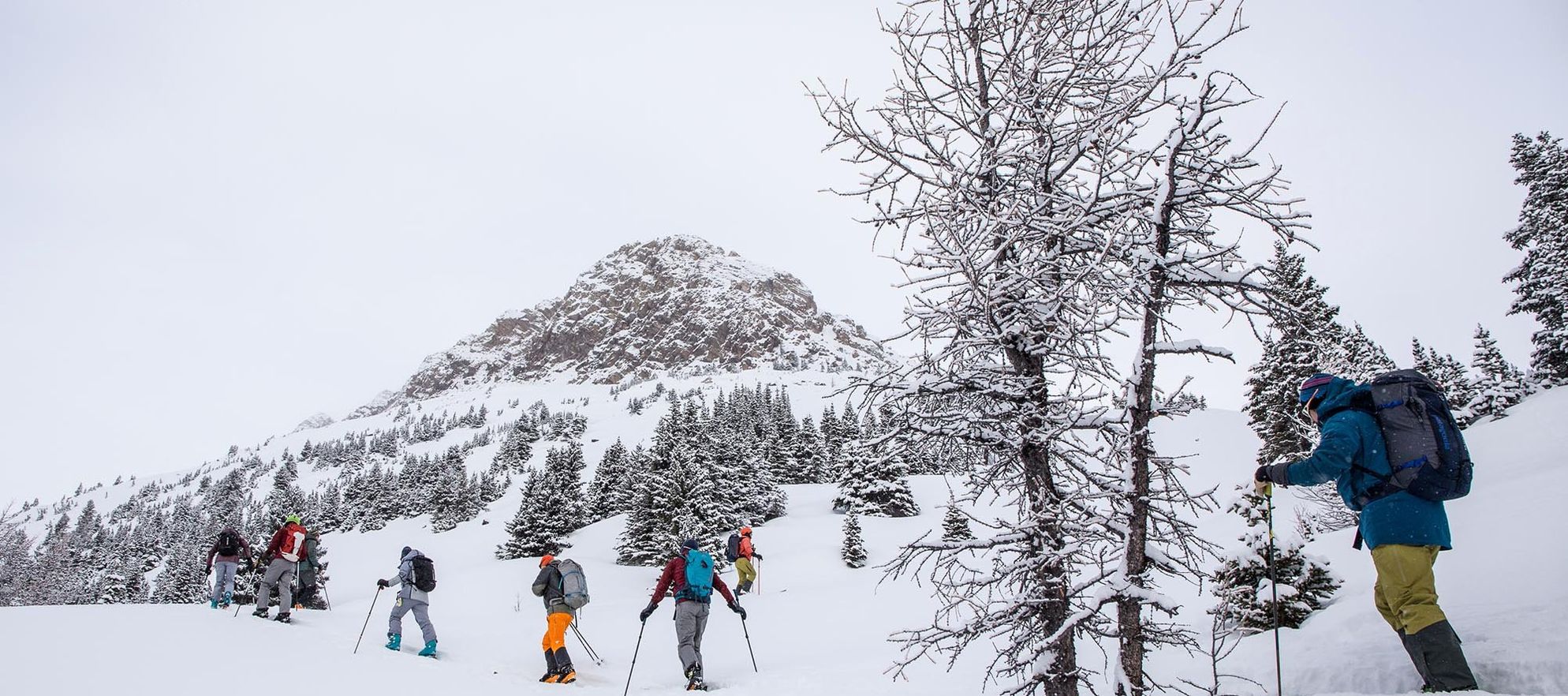Your Guide To Backcountry Skiing & Snowboarding in Banff National Park
- Jan 9, 2018

When tourists gather at countless photo hotspots in Banff National Park, many are blissfully unaware that they are also gazing up at some of the finest backcountry skiing and snowboarding terrain that North America has to offer.
From mellow glades to impossibly steep looking slivers of snow between cliff walls, to the huge glaciers which draw sightseers from all over the world, there is enough backcountry skiing (and that also means snowboarding) here to last several lifetimes.
Although daunting, this world is becoming more accessible than ever before, with huge advances in gear and an abundance of information now available at the click of a button. Here's a glimpse of what you need to get out there and earn your turns in this snowy paradise.
*Please note: Backcountry skiing is inherently dangerous. New skiers should seek instruction from a professional ACMG.
THE GEAR
Partners
Find backcountry friends and/or partners who you trust, and who you can have honest discussions with. Good decisions will start from here.
Avalanche Rescue Gear
Backcountry skiing requires travel through avalanche terrain and having the gear to rescue your companions is essential. This means a three-antenna digital transceiver, a metal shovel, and a collapsible probe.
Touring Gear
Before you can ski down, you need to climb up. For skiers this typically means bindings that can release at the heel, lighter ski boots that have a walk mode, and skins to attach to the bottom of your skis. For snowboarders, a splitboard which can separate into two is the preferred mode of transport, although snowshoes are sometimes used instead.
Emergency Gear
Being in the backcountry means trading the conveniences of day lodges and other resort amenities for fresh powder, untamed wilderness and a sense of solitude. Self-sufficiency, then, is key, and you should pack your bag accordingly. The following list is a good starting point, but by no means exhaustive: first aid kit; repair kit; extra food and water; extra clothing; map and compass; headlamp with extra batteries; a bivy or survival bag and fire starting material; and a Personal Locator Beacon (you will often be hours away from any cell phone service).
THE KNOWLEDGE & THE SKILLS
None of that gear will be of any use if you don't know how to use it, and even the most experienced backcountry skiers will admit they're still constantly learning. Here are some starting points for building the knowledge and skills you need to stay safe and have fun when backcountry skiing:
- An Avalanche Skills Training (Offered in Banff National Park by Yamnuska Mountain Adventures) course will teach you the basics of recognizing avalanche terrain and performing companion rescue.
- Practicing regularly with your gear and with your partners will mean the basics become second nature.
- Make use of the many books and online resources which cover avalanche safety and winter backcountry travel. Bruce Tremper's 'Staying Alive in Avalanche Terrain' is an excellent place to start.
- Guidebooks can help direct you to gentler tours through simple, less exposed terrain. Once you start gaining experience you can slowly build up to bigger, more complex terrain.
- Professional ACMG Guides can be an incredible resource. Consider hiring a guide . Not only will they help maximize your fun and take you to the best skiing, but they can teach you countless tricks and tips to make your backcountry experiences safer and more enjoyable.
THE CONDITIONS
Conditions can change from minute to minute and will determine the success of any backcountry ski trip. These resources will stand you in good stead:
- Regional avalanche bulletins can be found at www.avalanche.ca and are updated daily throughout the winter. Use them to monitor conditions and gain an overview of what to look out for. Please also consult with Parks Canada for the latest information.
- Monitoring the weather will help you determine not only where the safe skiing is, but where the good skiing is. Remote weather stations can now provide real-time updates on temperatures, winds, and precipitation.
- Patience! The mountains are not going anywhere. If the conditions aren't right, come back another time!
Backcountry skiing has given many their most beautiful days - filled with their best turns, widest smiles, biggest laughs, and most humbling challenges. Try it - you might just like it.